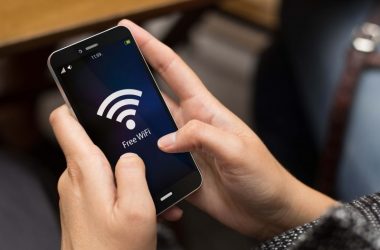Any and all executives or managers looking to get more productivity from their information workers — and, really, what company isn't shamelessly espousing a “more with less” philosophythese days? — might want to pay attention to the following strategy: Set your workers free from the office.
“Teleworking,” or working fromhome/Starbucks/not-within-corporate-walls, of course, is nothing new. High-powered laptops,ubiquitous broadband and Wi-Fi connections, and even-my-grandmother-has-one cell phones have all enabled a seamless virtual work-experience for the modern employee.
But new survey data from Forrester Research shows that tech-savvy information workers want to be connected to (yet untethered from) the office even more–they want smartphones. And they want them badly: Many are even ready, willing and able to foot all or part of the bill to gain access to corporate e-mail and documents, as well as stay connected to their work lives–often at the expense of their personal lives.
Just 11% of U.S. information workers today use a smartphone at work, according to Forrester's 2009 Smartphones and Telecommuting: Workforce Technology Adoption 2009 report. (The Forrester survey fielded responses of 2,001 U.S. information workers who use a computer or terminal at their job and work at an organization with 100 or more employees.)
The information workers (or “iWorkers”) surveyed want more flexible work hours (two-thirds of respondents said so) and a third want to work from home at least occasionally. In the past, info workers were forced or took the initiative (depending on your point of view) to use personal mobile devices to get their jobs done: A third of respondents in the survey report that they use their own mobile phones for work.
“The logic is clear,” writes principal analyst Ted Schadler in the report. “Smartphones and laptops unshackle work from location.”
Work-life imbalance
Two additional nuggets of survey data and Forrester analysis offer additional employer incentive to enable and encourage increased smartphone and laptop use: Teleworkers work, on average, two hours more per week than office workers. “Access to real applications from anywhere means more work in more places,” Schadler contends. “And that translates into higher productivity–or at least higher utilization of your IT investments,” such as collaboration, instant messaging and Web conferencing tools. (For more on this, seeiPhone + ERP Go Together Like PB & Jelly.)
And, adds Schadler, that nearly insatiable demand for a smartphone will allow companies to “offload costs and responsibility for devices and plans to their employees.” (For comparison, the report notes that one in three U.S. iWorkers has a laptop.)
All of this seems to be a win-win for companies that embrace this strategy. “Giving information workers access to key corporate resources from any facility or from home and elsewhere raises the chances that they can find a key piece of information when it's most valuable: at the point of decision-making,” Schadler writes. “And that translates into higher team productivity.”
But what about the employees? It's hard to deny that, on some level, they're getting a raw deal: Not only are the employees allowing themselves to work longer hours (presumably without any pay increase), but some of them are actually going to have to pay out of their own pockets for the “privilege” of work invading their private life, via that sleek smartphone that's always on.
Smartphone users, in particular, “work from everywhere,” Schadler adds. “This data is definitive: iWorkers with smartphones use their devices everywhere–81% from home, 62% while traveling, even 64% while at their desks. And 29% of smartphone users spend three or more hours a day with the device.”
As the line between work and personal life blurs even more and the spread of mobile devices continues on its torrid pace, the question of who pays and how much will likely become more critical to corporate IT, finance and security departments. (See 7 Things the CIO Should Know About Telecommuting.)
“Telework is on the rise, poised to grow to 63 million U.S. iWorkers by 2016,” Schadler writes. “Regardless of its telework frequency, this group is technology-bound, more likely to use virtually every tool in the stable.”





